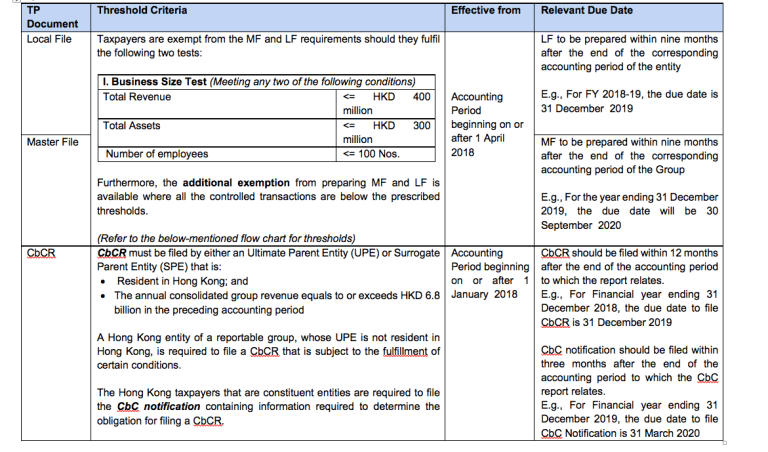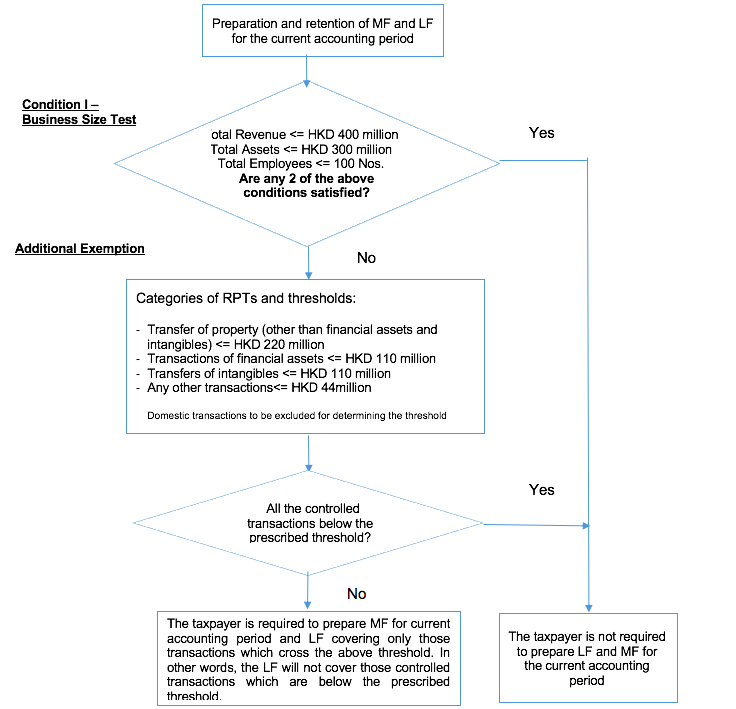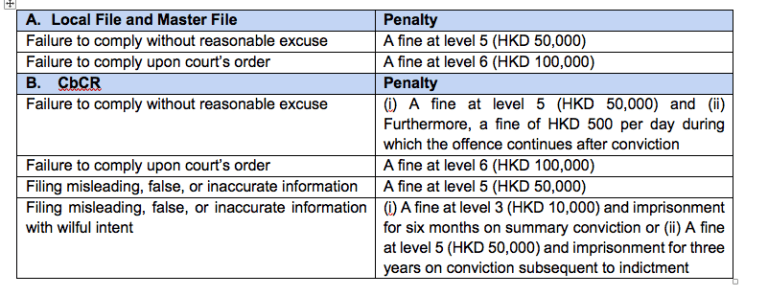Delving into Hong Kong’s New Transfer Pricing Landscape
On July 4, 2018, Hong Kong’s Inland Revenue Department passed the country’s final Inland Revenue (Amendment) (No. 6) Bill 2017, (the Amendment Bill).
This Amendment Bill (which became law on July 13, 2018) specified the documentary requirements from a transfer pricing perspective and also introduced measures to address various recommendations under BEPS Action Plans.
With the amendment in Ordinance 2018, Hong Kong implemented base erosion and profit shifting (BEPS) minimum standards and formally introduced a transfer pricing regulatory regime and documentation requirement into Hong Kong tax law.
This article is intended to lay down the key elements of the new transfer pricing regime in Hong Kong and our comments on the areas that companies’ management ought to deliberate to adhere in terms of the regulatory transfer pricing compliance.
Arm’s Length Principle (ALP)
The IRD has been empowered to impose transfer pricing adjustments on either income or expense arising from non-arm’s length transactions between associated persons that lead to a potential Hong Kong tax advantage.
However, domestic related-party transactions are exempt from this rule if transactions are domestic in nature; do not lead to tax difference; and are not used for tax avoidance.
The rules are effective from assessment year starting April 1, 2018.
Importantly,the applicability of the ALP is independent of the applicability of transfer pricing documentation. Therefore, transfer pricing arrangements of all the taxpayers, irrespective of documentation threshold that are inconsistent with the ALP, will have to be corrected.
Additionally, the ALP applies to all types of tax, including profits tax, property tax, and salaries tax. Hong Kong adopted a scheduler income tax system, which is different from the comprehensive income tax regimes of several overseas’ tax jurisdictions whereby all the sources of income are aggregated for assessment purposes.
Attribution of profits to a permanent establishment
Specific provisions have been introduced, which apply to any non-resident who has a permanent establishment (PE) that carries on a trade, profession, or business in Hong Kong. The guidance on attributing income/loss to a PE is based on the Authorised OECD Approach (AOA).
The IRD has clarified that its long-established Territorial Source Principle of Taxation will continue to apply to determine the chargeability of income or profits to Hong Kong tax. Therefore, this provision will not limit or alter the conditions for charging profits tax, which means that only those attributable profits that have a Hong Kong-based source will be subject to tax.
The provisions apply to assessment year starting April 1, 2019.
The definition of PE for tax treaty countries is based on the PE article in Hong Kong’s existing tax treaties, whereas for non-tax treaty countries, the definition is based on the OECD’s recommendations under BEPS Action 7.
Particular relevance to financial institutions, banks, and insurance companies that often maintain Hong Kong branches, since the PE in Hong Kong, was not specifically compensated in the past. This is also the reason why the implementation was delayed by 12 months.
With the application of territorial source rules, only the on-shore-sourced profits (and not off-shore) related to the operations of the PE in Hong Kong will be chargeable to tax. In other words, the application of the AOA, in conjunction with the source rules, may result in more profits for the entity that is subject to tax in Hong Kong.
IRD has deferred implementation of this provision by one year to allow sufficient time for taxpayers that require a transition to using the AOA.
More guidance is due on the application of this provision.
Treatment of intangibles
IRD could impose a tax on the Hong Kong taxpayers if they have carried out value creation activities, such as development, enhancement, maintenance, protection or exploitation (DEMPE) functions in Hong Kong that contributed to any intellectual property (IP) held by an overseas related party. The rule is applicable to assessment year starting April 1, 2019.
The taxpayers should ensure compliance with the arm’s length principle and properly document the transfer pricing position of their IP strategy in view of the potential tax uncertainties that arise. Furthermore, the effective date has also been deferred to give more time to the groups to analyse the implications and take necessary steps.
Transfer Pricing Documentation Requirements
Hong Kong has adopted the OECD recommended three-tiered documentation structure, comprising master-file, local-file and country-by-country (CbC) reporting.
Snapshot of Hong Kong Transfer Pricing Documentation Requirements

MF and LF:
- MF and LF are to be prepared in either the English or Chinese language and must be retained for a period of at least seven years.
- Flowchart representing conditions for exemption from preparing MF and LF under Section 58 of the IRO:

Country-by-country (CbC) reporting
- A Hong Kong entity of a reportable group, whose UPE is not a resident of Hong Kong, is required to file a CbC report if any of the following conditions are met: (i) the UPE is not required to file a CbC report in home country; (ii) in the absence of an agreement for automatic exchange of tax information; (iii) in case of a systemic failure to exchange information.
- CbC report filing was voluntary in Hong Kong for accounting period on or after January 1, 2016, but before January 1, 2018,
- Furthermore, IRD has indicated that the Multilateral Convention (comprising over 70 jurisdictions) will be the main platform for Hong Kong to exchange CbC reports with other jurisdictions. Upon collection of the CbC reports from the taxpayers, the IRD will utilize the Common Transmission System (CTS) administered by the OECD in performing the automatic exchange with jurisdictions having activated exchange relationships with Hong Kong.
Hong Kong subsidiaries of multinational enterprises (MNEs) may rely on the master file prepared by the Group. However, the IRD requires the master files to be produced in the English or Chinese language. In case the relevant versions are unavailable, it may lead to additional effort for the Group by making available the master file in the prescribed languages.
Relatively low threshold for master file will mandate medium-sized MNEs not meeting master file threshold in home jurisdiction to produce master file in Hong Kong.
Local filing of CbC report for foreign-headquartered MNE may be required in Hong Kong unless information exchange agreements are in place.
Advance pricing arrangements
The Ordinance puts in place a statutory advanced pricing arrangement (APA) regime, which allows for unilateral, bilateral, and multilateral APA applications. Certain changes have been made to introduce fees chargeable by the IRD to applicants, including hourly service charges for time spent by IRD officials processing applications. The service charge in respect of fees for an APA application should not exceed HKD500,000.
The APA program is open to all the residents and non-residents with a permanent establishment in the country, subject to profits tax and having related party transactions in Hong Kong. Furthermore, rollback of transfer pricing methodology for APA purposes to prior years depending on the circumstances of each case has also been made available.
Thresholds for APA applications

Penalties and non-compliance
If a taxpayer has adopted non-arm’s length pricing for its related-party transactions and is unable to demonstrate that it has exercised reasonable effort to determine the arm’s length price for such transactions, the IRD is empowered to impose a penalty by way of additional tax not exceeding 100% of the amount of the tax undercharged.
The penalty for transfer pricing matters is less than that imposed for incorrect returns and other matters under Section 82A of the IRD (i.e.300% of the amount of the tax undercharged).
Penalties for contravening transfer pricing documentation requirements

Dispute resolution mechanism
As jurisdictions, including Hong Kong, begin to focus on the enforcement of transfer pricing laws and regulations, it could be reasonably anticipated that the result would be more disputes and double tax issues that would need resolution. To ensure effective resolution of these disputes, the regime provides for a statutory dispute resolution mechanism whereby:
- Any taxpayer can present a case for a mutual agreement procedure (MAP) and/or arbitration under a relevant tax treaty; and
- The IRD must give effect to any agreement reached with the other tax authority concerned in the course of the MAP or arbitration.
It is, therefore, important for Hong Kong entities to be well-coordinated with its related counterparts, to monitor the issues and progress of each other’s transfer pricing audits and to ensure that the concerned competent authorities are duly notified. This would help in soliciting their involvement at appropriate moments for speedy and amicable resolution of disputes.
The deadline for applying for corresponding adjustments have been extended to the later date of:
- The end of two years from the time when the foreign tax adjustment was made; or
- The expiry of the time limit for making an assessment/additional assessment (i.e., six years).
Pertinently, a taxpayer is required to give a written notice to the IRD within three months from the date of such an adjustment.
Other aspects
OECD’s 2019 Peer Review Report on the Exchange of Information on Request rates Hong Kong as “Largely Compliant” on access to information and the extensive extension of its network of exchange partners. It is expected that the Hong Kong authorities will focus on transfer pricing in the coming years and the taxpayers are recommended to consider the following:
- Review the existing related-party transactions that may be subject to the new transfer pricing rules and revisit the existing transfer pricing policies, particularly for services that have not been compensated at arm’s length in the past;
- Maintain contemporaneous and robust transfer pricing documentation within the applicable deadlines.
Given the above, there does exist uncertainties as to the interpretation and practical application of the aforementioned transfer pricing provisions emanating from the Ordinance. Furthermore, the guidance is expected in the coming months from Hong Kong’s IRD through new/updated DIPNs, which would provide further clarity.
Way forward
With the introduction of the transfer pricing rules and enforcement of various tools to measure BEPS, the multinational enterprises operating in Hong Kong will have to be better equipped in terms of a robust documentation by way of a three-tiered structure, which is not only accurate but also represents profits being in sync with the value chain.
With tax authorities having access to significant information, the challenges arising due to detailed scrutiny have a far-reaching impact on the multinationals.
Companies should involve various stakeholders to revisit transfer pricing policies and tax structure positions with respect to their supply chains and use of IP. Furthermore, the related-party transactions undertaken need to be ensured to meet arm’s length criteria to ensure compliance with local laws and plug any probable issues that may arise in future on account of PE.



